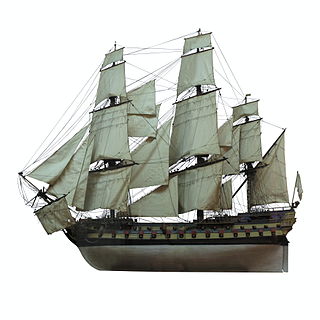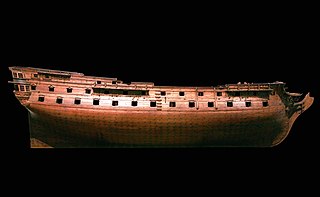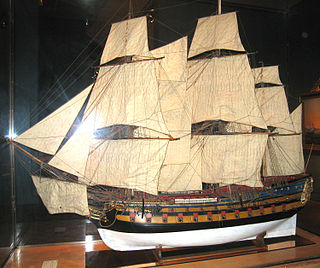Early life and education
Ulane Zeeck took her Bachelor of Arts degree at West Texas State College at Canyon,Texas. She joined the U.S. Navy and was given a naval commission in 1943 after attending the Naval Midshipman's (Women's Reserve) Training School at Northampton,Massachusetts. While on active duty,she served as a recruiting officer,instructor,and personnel officer. At the end of the war,she served in the Congressional liaison unit at the Bureau of Naval Personnel. Leaving naval service in 1946 after reaching the rank of lieutenant commander,she went on to work for the Congressional Research Service at the Library of Congress,specializing in military affairs. While in Washington,she met an officer in the French Navy's medical corps then serving with the French naval mission in Washington,D.C.,Paul-Henri Bonnel (1912–1984),whom she married in 1947. Following their marriage,Bonnel went to France with her husband,who had a distinguished career in the French Navy,rising to be chief of the maritime health service (chef du service santédes gens de mer) in 1969-72 and an internationally recognized biologist associated with the World Health Organization.
After discovering a love for history in Texas,Bonnel went to the Universitéde Genève,Switzerland,while her husband was serving at the headquarters of the World Health Organization from 1951. There,she studied under aul Collart,Luc Monnier,and Pierre Traschler. Going further with her studies,she completed her doctoral thesis under Marcel Reinhard and Marcel Dunan at the Sorbonne on French and American privateering in the period between 1797 and 1815,including the Quasi-War with France and the War of 1812.
Professional career
Upon completing her doctorate,Bonnel immediately began to work in the field of naval history and quickly became a key figure in reviving this subject that had long been neglected by universities in France. She was the founder of the journal Chronique d'histoire maritime in 1979 and,a key figure in organizing the Commission française d'histoire maritime in 1980,and later served as its president in 1986-1989.
In 1964,she was appointed the delegate in France for the Library of Congress and played an extremely important role in developing cooperation between French and American naval historians in the period leading up to the bicentenary of the United States. In this role,she was the key person who coordinated the photocopying of documents from French archives for the Library of Congress and the U.S. Navy's Naval Historical Center,relating to the key role that the French Navy played in obtaining American Independence in 1778-1783. Many of the documents she acquired were translated to enrich the U.S. Navy's multivolume series on Naval Documents of the American Revolution,begun by William Bell Clark and William J. Morgan (historian).
In recognition of her contributions to Franco-American historical relations,she was elected the first woman member of the History,Letters,and Arts section of the Académie de Marine. She also served as president of the Association internationale des Docteurs des Universités françaises and vice-president of the Institut Napoléon. After the 1984 discovery of the wreck of CSS Alabama,sunk in Cherbourg harbor during the American Civil War,she helped to organize both the French and American branches of the CSS Alabama Association,serving as president of the French branch and helping to develop support for its work in underwater archeology on the site of the wreck. In this role,she was the key person working to negotiate the international agreement between France and the United States over the wreck and the wreck site in French waters.

The French Navy, informally La Royale, is the maritime arm of the French Armed Forces and one of the five military service branches of France. It is among the largest and most powerful naval forces in the world, ranking seventh in combined fleet tonnage and fifth in number of naval vessels. The French Navy is one of eight naval forces currently operating fixed-wing aircraft carriers, with its flagship Charles de Gaulle being the only nuclear-powered aircraft carrier outside the United States Navy, and one of two non-American vessels to use catapults to launch aircraft.

Count Toussaint-Guillaume Picquet de la Motte, also known as La Motte-Picquet was a French Navy officer and admiral. Over a career spanning 50 years, he served under Louis XV and Louis XVI and took part in 34 campaigns. He fought in the Seven Years' War and in the Naval battles of the American Revolutionary War, earning the ranks of Commandeur in the Order of Saint Louis in 1780, and of Grand Cross in 1784. He died during the French Revolution.

The Foudre was a French seaplane carrier, the first in history. Her development followed the invention of the seaplane in 1910 with the French Le Canard.

The Fantasque was a Lion-class 64-gun ship of the line of the French Navy. She is famous for being captained by the French commander Pierre-André de Suffren during the American Revolutionary War.

Vengeur du Peuple was a 74-gun ship of the line of the French Navy. Funded by a don des vaisseaux donation from the chamber of commerce of Marseille, she was launched in 1762 as Marseillois.

Jean-Marthe-Adrien L'Hermite was a French sea captain and rear admiral, notable for his involvement in the Glorious First of June and his expedition into the Atlantic in 1805.

Engageante was a 26-gun frigate of the French Navy, only ship of her class, built to a design by Jean-François Etienne. The British captured her in 1794 and converted her to a hospital ship. She served as a hospital ship until she was broken up in 1811.

The Vengeur was a 64-gun ship of the line of the French Navy designed by Antoine Groignard. She saw action with Bailli de Suffren during the American War of Independence.
Onésime-Joachim Troude was a French Navy officer and later naval historian.

Sphinx was a paddle steamer, initially rated as a corvette, of the French Navy, and lead ship of her class. She was the first operational French naval steamer. She took part in the Invasion of Algiers in 1830, pioneering the role of steamers in navies of the mid-19th century, and later took part in the transfer of the Luxor Obelisk from Egypt to Paris.

Louis-Jean-Nicolas Lejoille was a French Navy officer and captain.
The Hazard was an 18-gun brig of the French Navy, lead ship of her class.
Léon Guérin (1807–1885) was a French author, poet, and naval historian.
Moineau was the former merchantman Spartiate, which the French Navy requisitioned to serve as 16-gun corvette on the Île de France station between 1794 and 1797.

The action of 27 February 1809 was a minor naval engagement during the French Revolutionary Wars. Two 44-gun frigates, Pénélope and Pauline, sortied from Toulon harbour to chase a British frigate, HMS Proserpine, which was conducting surveillance of French movements. First sneaking undetected and later trying to pass herself as a British frigate coming to relieve Proserpine, Pénélope approached within gun range before being identified. With the help of Pauline, she subdued Proserpine and forced her to surrender after a one-hour fight.

Corse, initially named Napoléon before its second commission, was a sail and steam experimental schooner, initially commissioned as a mail steamer. Largely overperforming her specifications and an excellent sailor, she was purchased by the Navy and commissioned to serve as an aviso, becoming the first propeller ship in service in the French Navy. She took part in the Crimean War and ferried Prince Napoléon to Iceland in 1856. She was eventually broken up in 1902.

Sphinx was a two-deck 64 gun ship of the French Navy. She was built at Brest to plans by Ollivier Fils and launched in 1776. She took the name of a recently retired 64-gun ship with the same dimensions. She fought in the American War of Independence, most notably in Suffren's campaign in the Indian Ocean.
Diligente was a 26-gun frigate of the French Navy. Originally built for the French East India Company, she was purchased by the Navy and took part in the War of American Independence.
Comète was a 30-gun French Navy frigate built during the wave of French naval construction that separated the end of the War of the Austrian Succession in 1748 from the start of the Seven Years' War in 1755.

Aurore (Q192) was a French Navy submarine, the lead ship of the Aurore-class. She served in the naval forces of Vichy France during the early years of World War II and was scuttled in November 1942.
This page is based on this
Wikipedia article Text is available under the
CC BY-SA 4.0 license; additional terms may apply.
Images, videos and audio are available under their respective licenses.













